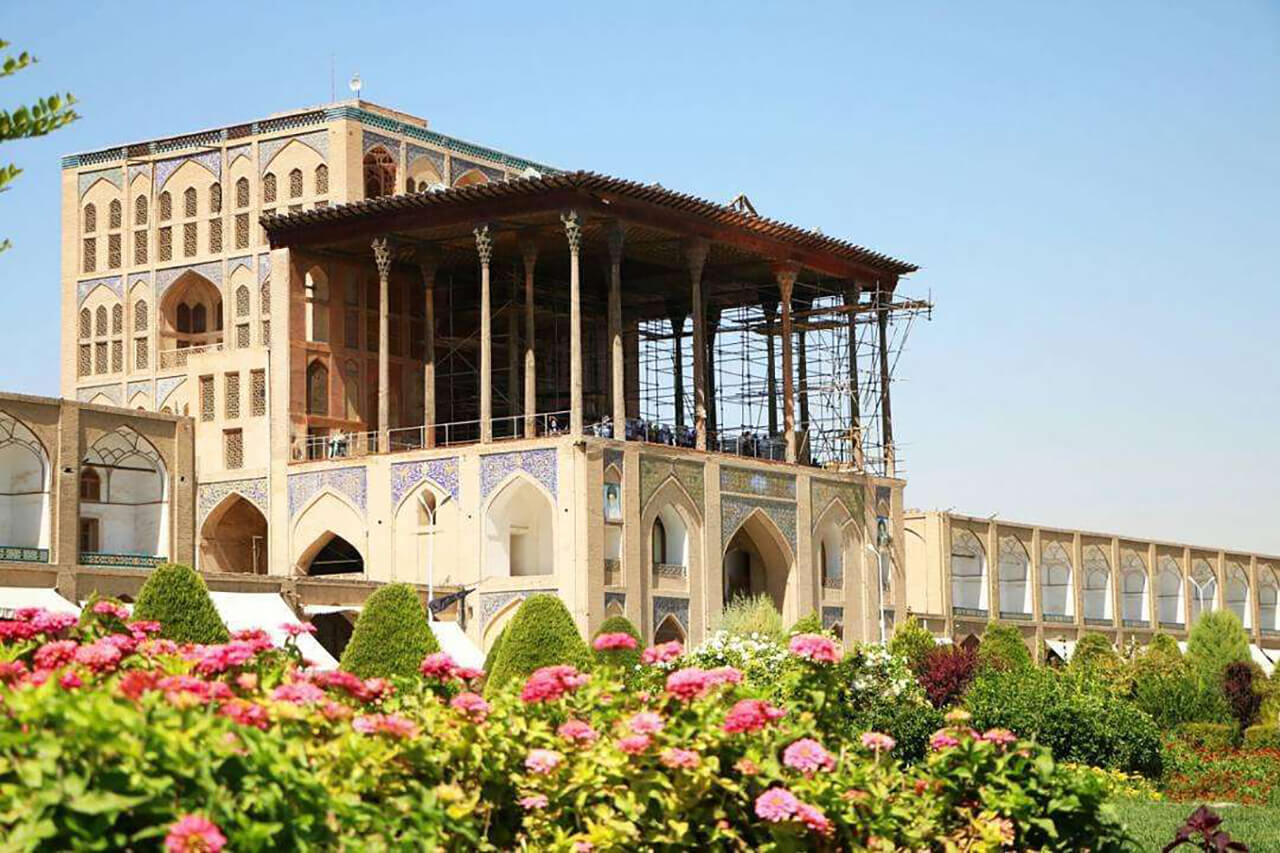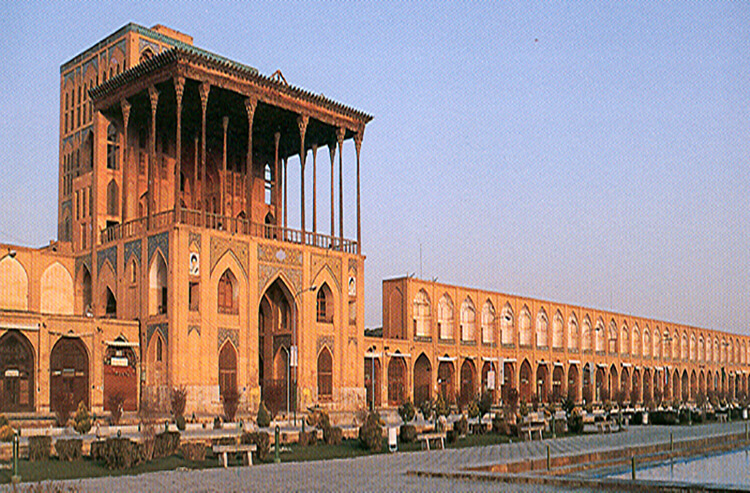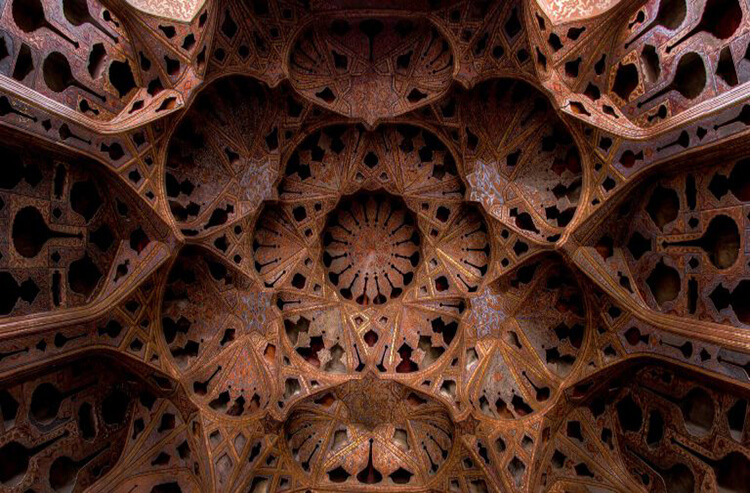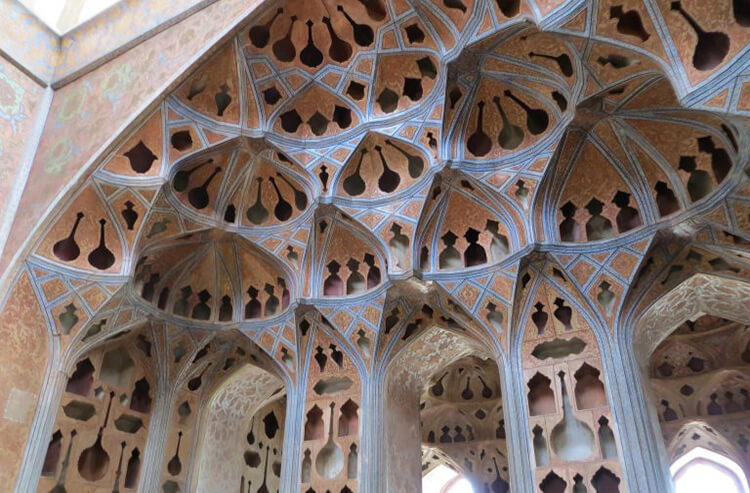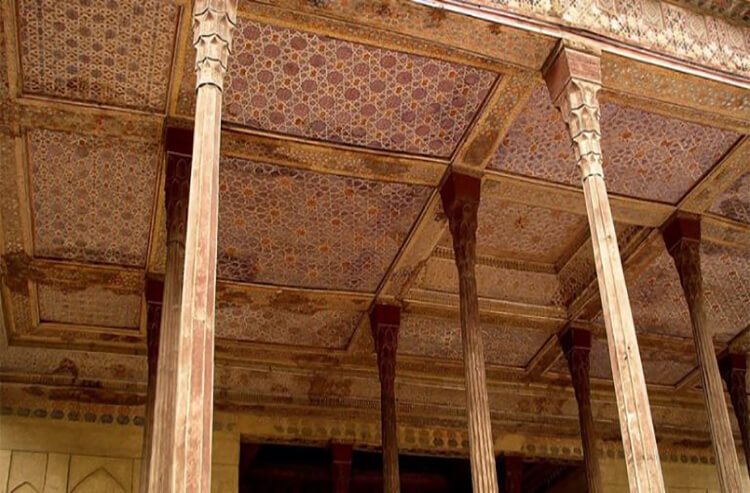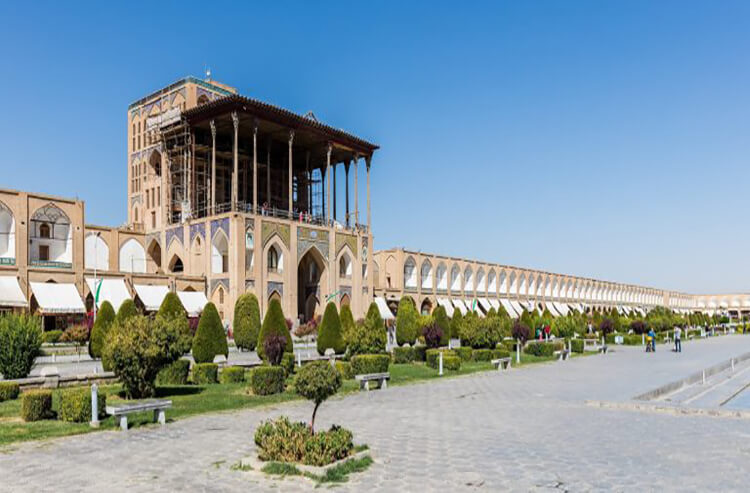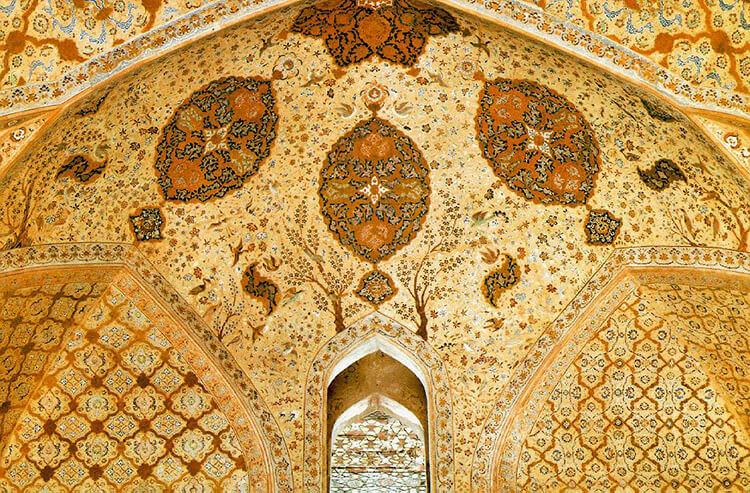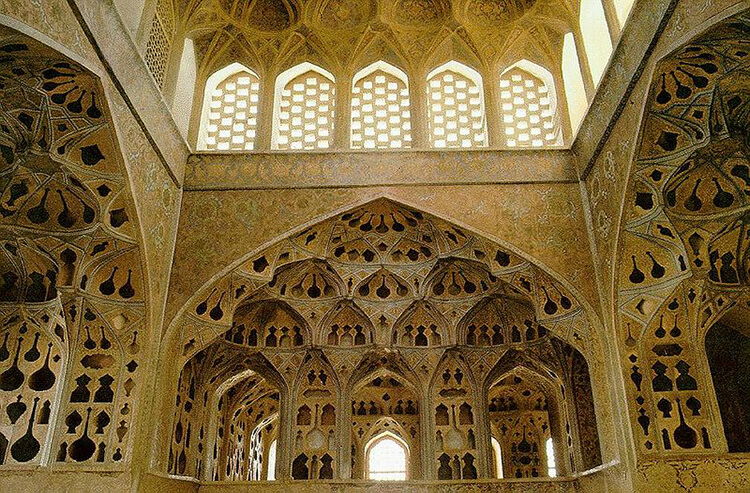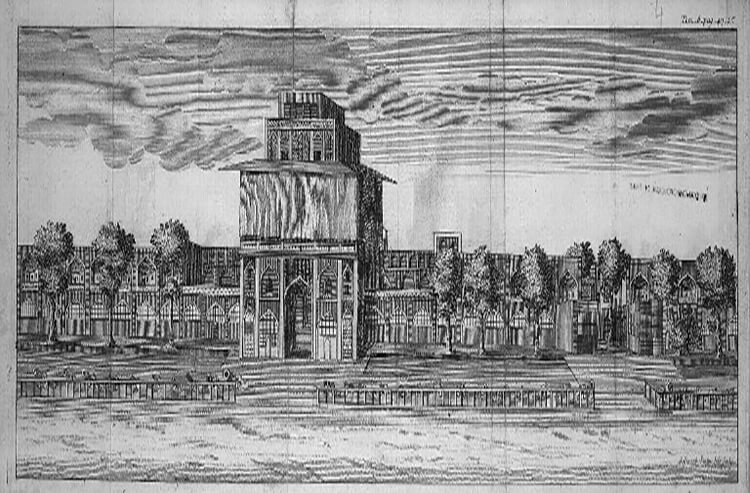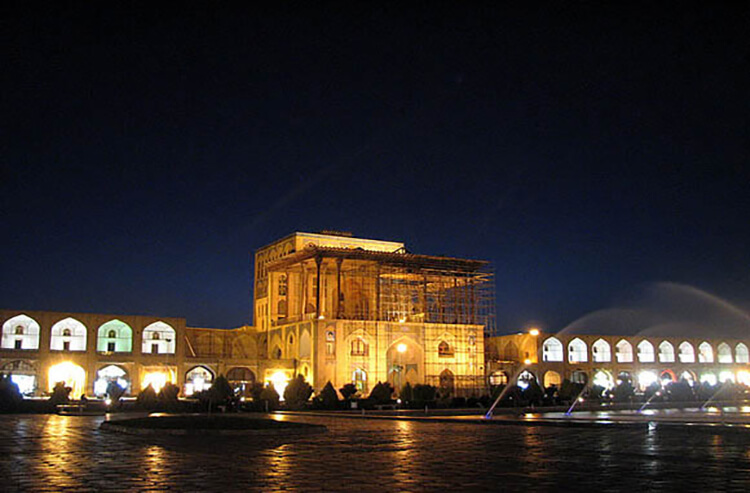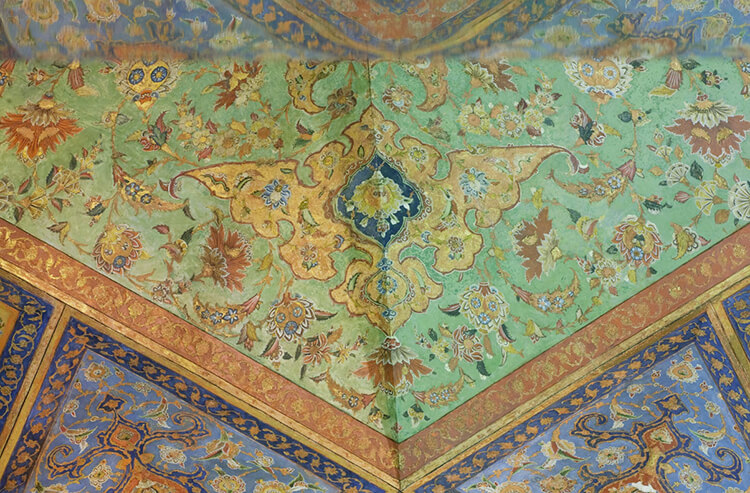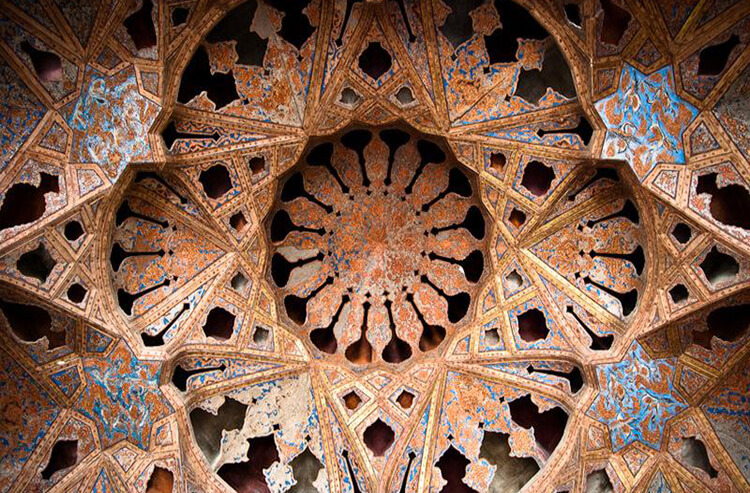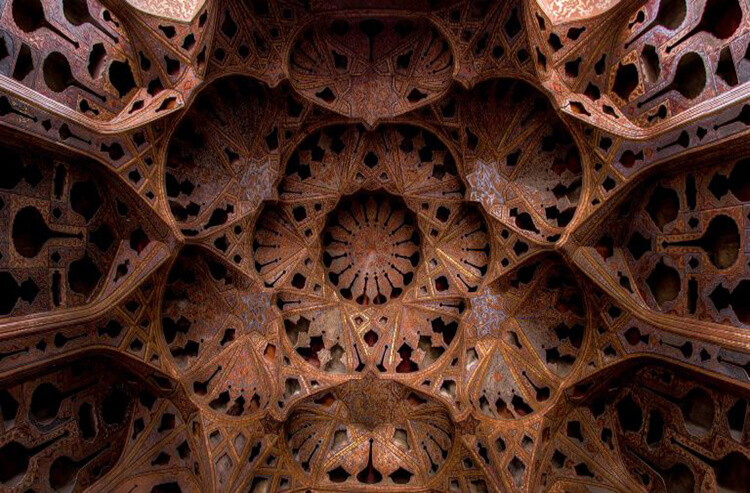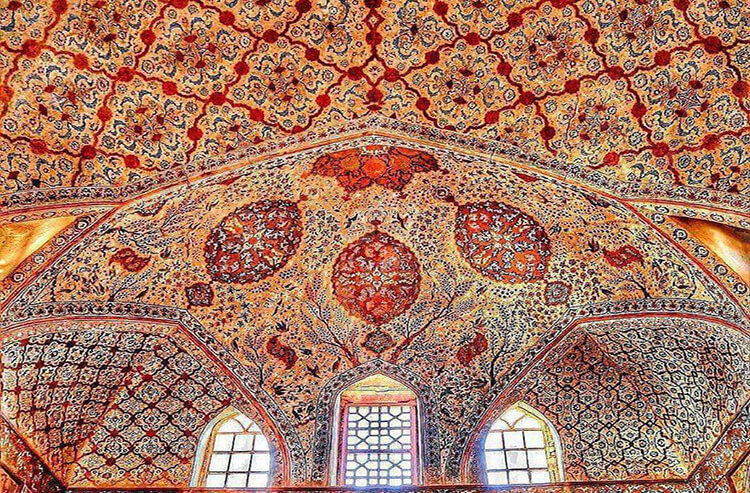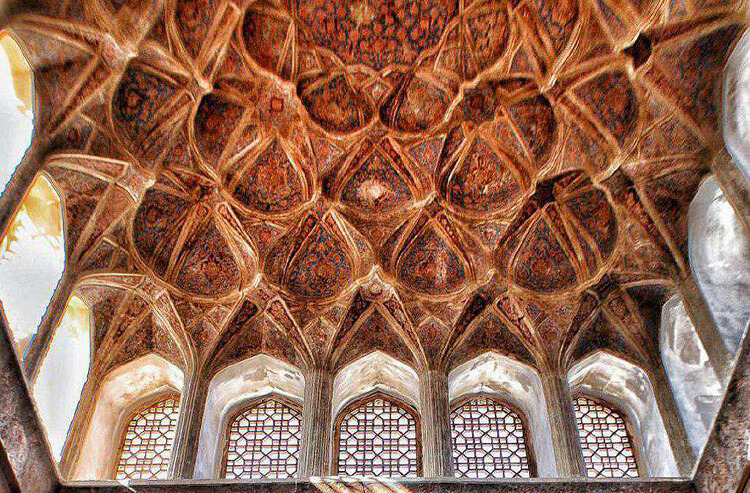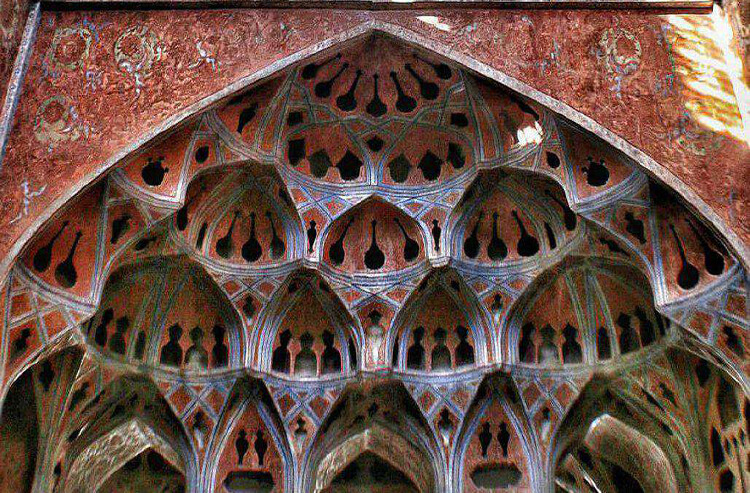Ali Qapu Palace
History of Ali Qapu Palace
At the west of Imam Square (Nagh'sh -e Jahan), just in front of the Sheikh Lotfollah mosque one, of the most magnificent palaces of 17th century is located. The Ali Qapu palace is well-known palace all over Iran. The first part of palace was built in 1597. It was used as a residential palace. Shah Abbas the great, ordered to construct the palace on the site of palace and garden from the Timurid time. Shah Abbas’s palace was a four floors with a veranda. Shah Abbas the second, expanded the palace and a music hall (room) was constructed on the top of palace.
The palace is about 38 meters high, the loftiest and tallest building in the 17th century.
There are 52 rooms, but because a long restoration most of rooms are closed to visitors.
Some of Isfahanologists believe that Shah Abbas the great highly respected the first Shiite Imam Ali. On the other hand "Qapu" is a Turkish word means,” the magnificent door”.
An old door was replaced from the shrine of Imam Ali in Najaf, to Isfahan. All people even the Shah, when they entered the palace dismounted from horses, in order to respect Imam Ali.
Shah Abbas considered himself as a real follower of Imam Ali. A beautiful door ornamented with gold, silver and other fine arts was made in Isfahan and dedicated to the holy shrine of Imam Ali which is located in Najaf Iraq. The palace was pillaged and partly destructed during its history and restored by different rulers.
About Ali Qapu Palace
Several floors of the palace are designed for different purposes. The first floor was used as a chancellery. The third floor has a large hall which was used for Shah’s official receptions. The ceiling remains in its initial state with paintings of Reza Abbasi – the court painter of Shah Abbasi. The sixth floor is usually referred to as Music Hall. The interior of the room has not only decorative but also practical purpose – the shape of the walls contribute to acoustic properties. This hall was used for private parties and concerts of musical ensembles and singers. The balcony was built on one of the last stages. It is supported by 18 wooden columns and provides visitors with a spectacular view of Naqsh-e Jahan Square.
The terrace affords a wonderful perspective over the square and one of the best views of the Masjed-e Shah and the mountains beyond. The attractive wooden ceiling with intricate inlay work and exposed beams has been painstakingly restored and now attention is turning towards the walls. Peer behind the scaffolding and watch the artisans at work and it's easy to understand why the project is taking so long.
There is a remarkable pool in the center of verandah made of copper plates and has fountains. For certain occasions the pool was filled with water, brought to the pool by bucket-wheel (Charkh Ab). Water was collected from semi deep well and transferred to the pool. Beautiful certains covered three sides of verandah, when privacy needed. The royal family and their guests could watch polo games and different ceremonies from the verandah. On the west of verandah there is a magnificent throne hall decorated with fabulous plaster carvings and miniature painting.
Aali Qapu Stages
First Stage: The initial building, acting as entrance to the complex, was cubical and in two stories, with dimensions measuring 20 x 19 meters and rising to 13 meters.
Second Stage: The foundation of the cubical upper hall, built on the entrance vestibule over the initial cubic shape structure, was also in two stories.
Third Stage: The fifth story, using skylight for the central room, emphasized the vertical extension.
Fourth Stage: The eastern verandah or pavilion, advancing towards the square and supported by the tower shaped building, was built. The entrance vestibule was extended along the main gate along with a passage to the market perpendicular to the eastern flank of the building.
Fifth Stage: The wooden ceiling of the verandah, supported by 18 wooden columns, was built, in addition to the stairway in the southern flank known as the Royal Stairway.
Sixth Stage: During this stage, a water tower was built in the northern flank for supplying water to the copper pool of the columned verandah. Plaster decorations were created in the music hall.
The room on the sixth floor is also decorated with plasterwork, representing pots and vessels. It is well worth visiting the decorations around the room, which represent a considerable artistic feat.
These decorations were not placed there to act as cupboards: the stuccowork is most delicate and falls to pieces at the highest touch. Hence, it was placed in these rooms for the purpose of ornamentation.
